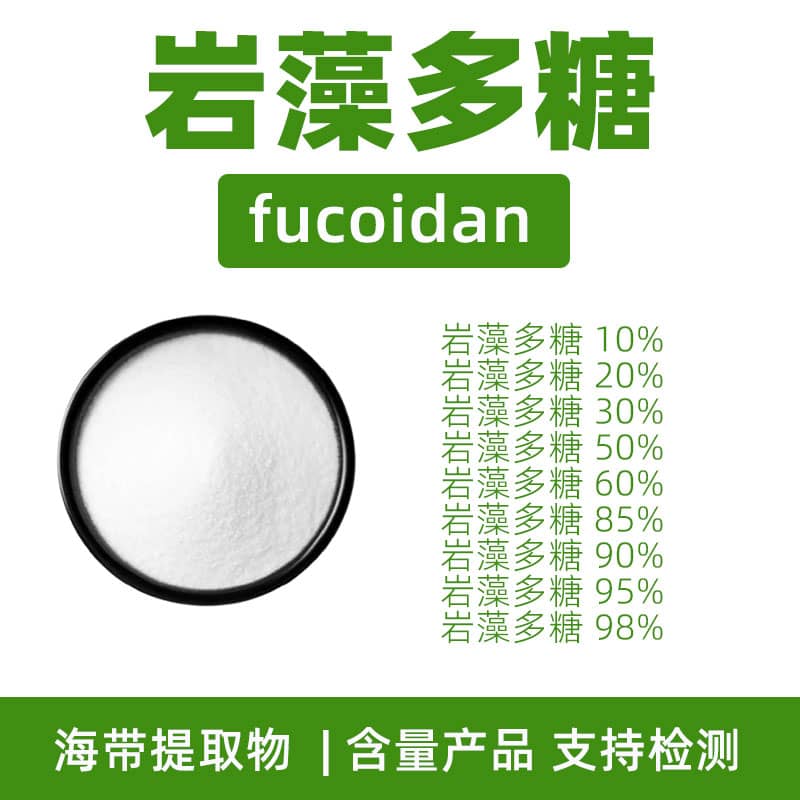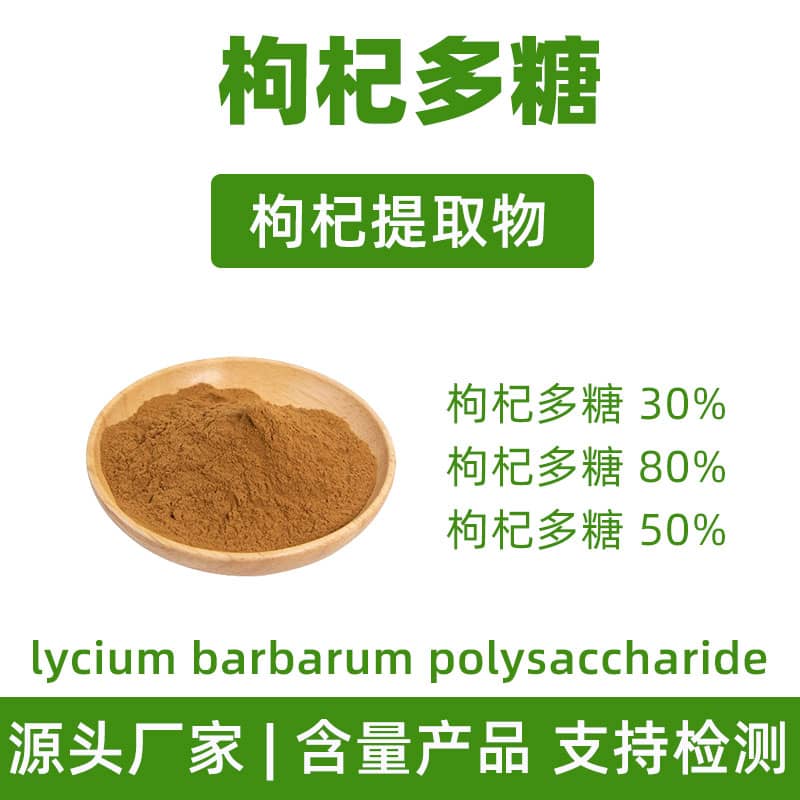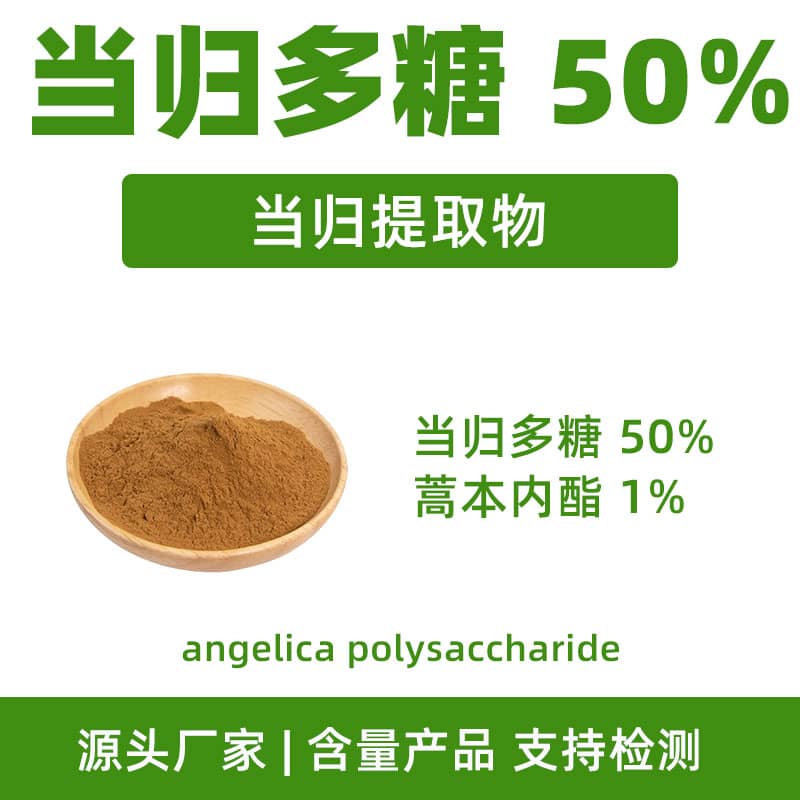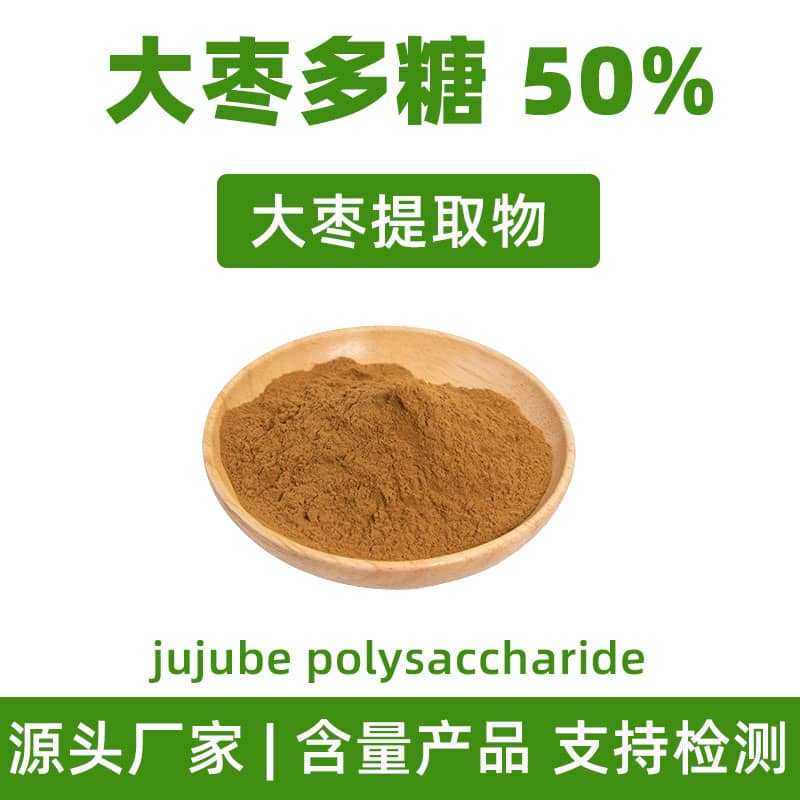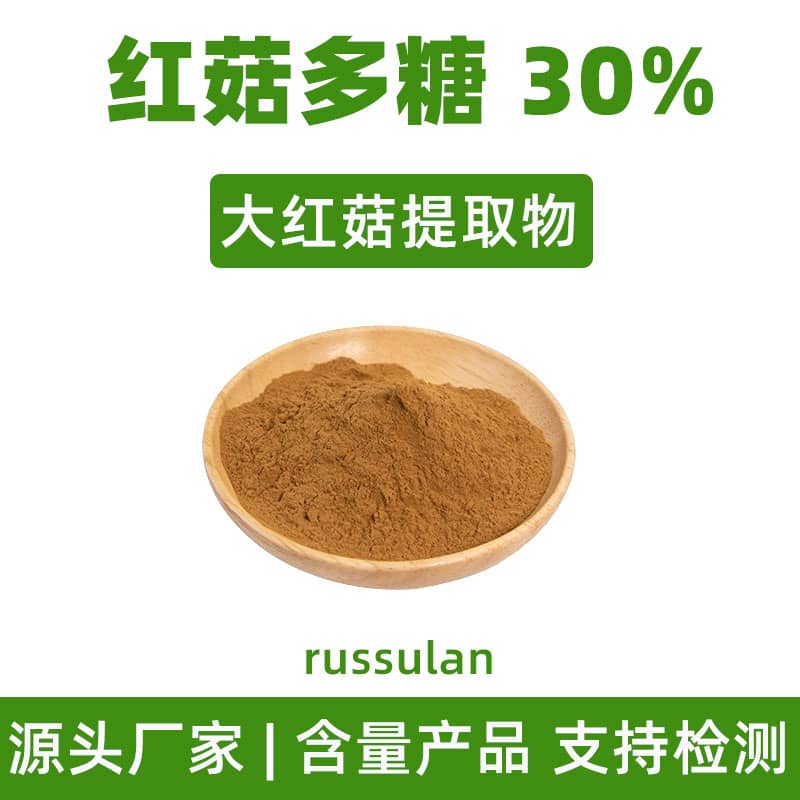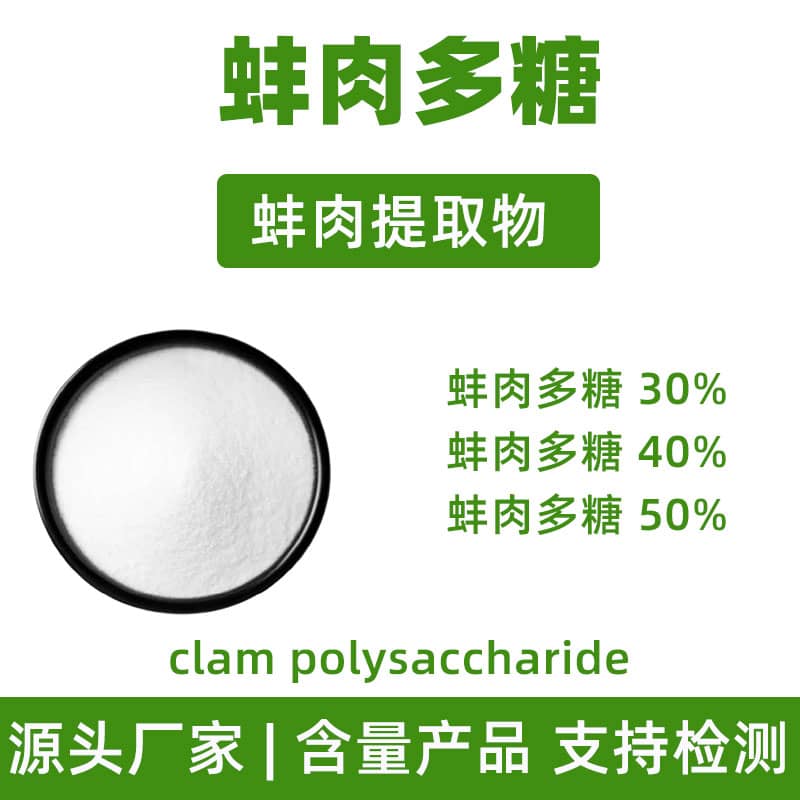Soy Polysaccharide Product Overview
Soy polysaccharide is a natural polysaccharide extracted from soybeans (Glycine max). It appears as a white to pale yellow powder with excellent solubility and stability.
Main Components
Soy polysaccharide is a high-molecular-weight compound composed primarily of glucose, galactose, and other monosaccharides. Its unique chemical structure gives it specific functional properties.
Benefits
- Immune Modulation: Enhances immune system defense mechanisms.
- Antioxidant Properties: Neutralizes free radicals and reduces oxidative stress.
- Digestive Health: Promotes gut microbiota balance and supports digestive function.
- Blood Sugar Regulation: Helps stabilize blood sugar levels by regulating carbohydrate absorption.
Applications
- Food Industry: Used as a dietary fiber and functional ingredient in beverages, nutritional supplements, and functional foods.
- Health Supplements: Supports immune health and overall well-being.
- Cosmetics: Provides moisturizing and antioxidant properties, enhancing skin hydration and resilience.
Soy polysaccharide offers diverse health and nutritional benefits, making it a valuable ingredient in food, supplements, and cosmetics formulations.
Soy Polysaccharide Production Process
Soy polysaccharide production involves several key steps:
- Raw Material Preparation
High-quality soybeans (Glycine max) are selected, washed to remove impurities, and dried to an optimal moisture level for extraction.
- Crushing and Grinding
Dried soybeans are crushed into small pieces and further ground into a fine powder, ensuring efficient extraction of polysaccharides.
- Extraction
The ground soybean powder is mixed with a solvent (commonly water or dilute acid). The mixture is heated and stirred to extract the polysaccharides.
- Filtration
The extract is filtered to remove solid residues, leaving a liquid rich in soy polysaccharides.
- Concentration
The liquid is concentrated under vacuum conditions to reduce water content while preserving the active components.
- Drying
The concentrate is dried into a powder using techniques like spray drying or freeze-drying, maintaining the stability of the polysaccharides.
- Pulverization and Sieving
The dried powder is pulverized and sieved to achieve a uniform particle size (80-100 mesh).
- Quality Control
Rigorous testing ensures the polysaccharide content, purity, and safety meet standards.
- Packaging
The final product is sealed in moisture-proof containers such as foil bags or plastic bottles, labeled with specifications and shelf-life information.
- Storage
The packaged product is stored in a cool, dry, and ventilated area, protected from sunlight and heat.
This production process ensures high-quality soy polysaccharides suitable for applications in food, supplements, and cosmetics.
Soy Polysaccharide Benefits and Potential Side Effects
Benefits and Effects
- Immune System Support: Enhances immune response and cellular activity.
- Antioxidant Activity: Protects cells by neutralizing free radicals.
- Gut Health Promotion: Balances gut microbiota and prevents constipation.
- Blood Sugar Regulation: Stabilizes glucose levels by moderating carbohydrate absorption.
- Cholesterol Reduction: Binds cholesterol, promoting its excretion and supporting cardiovascular health.
- Metabolic Support: Aids in weight and fat metabolism management.
Potential Side Effects
- Digestive Discomfort: May cause bloating, diarrhea, or constipation in sensitive individuals.
- Allergic Reactions: Not suitable for individuals with soy allergies.
- Drug Interactions: May affect the absorption of certain medications; consult a doctor if needed.
- Individual Sensitivity: Effects may vary; start with a low dose to gauge tolerance.
Soy Polysaccharide Applications and Usage
Medical Applications
- Health Supplements: Used as an immune modulator and antioxidant.
- Diabetes Support Products: Helps manage blood sugar levels in diabetes-related supplements.
Recommended Dosage: 500-1000 mg daily, adjusted as needed.
Food Applications
- Functional Foods: Enhances nutritional value in beverages, bars, and supplements.
- Dietary Fiber Supplementation: Improves digestion and gut health.
Recommended Dosage: 2-5 grams per serving or daily intake, depending on dietary needs.
Cosmetics Industry
Application Scenarios
- Skincare Products Soy polysaccharides are widely used in skincare products due to their moisturizing and antioxidant properties. They help improve skin hydration and reduce the impact of environmental stressors on the skin, commonly found in creams, lotions, and masks.
- Anti-Aging Products The antioxidant properties of soy polysaccharides make them an ideal ingredient in anti-aging products. They help reduce damage from free radicals, slowing the skin's aging process.
Usage and Dosage
- Skincare Products: Soy polysaccharides are typically added at concentrations of 0.5–2%. Specific concentrations can be adjusted based on the nature and purpose of the product to achieve desired effects.
- Anti-Aging Products: In anti-aging formulations, soy polysaccharides are generally used at levels of 1–3%. The exact amount should be tailored to the product’s formula and intended results.
Summary
Soy polysaccharides have diverse applications in pharmaceuticals, food, and cosmetics, offering a range of health benefits and functional support. They act as immune regulators and antioxidants in supplements, functional ingredients and dietary fiber in foods, and moisturizing and anti-aging agents in cosmetics. Recommended usage and dosage may vary depending on the application and product requirements, and should be adjusted following product instructions and professional advice.
Overview of Soy Polysaccharide Source Plant, Distribution, and Growth Conditions
Soy polysaccharides are natural polysaccharides extracted from soybeans (Glycine max). Below is a detailed overview of the source plant, distribution, and growth conditions for soybeans.
Source Plant Overview
Soybeans (Glycine max) are one of the most economically significant crops in the legume family (Leguminosae), cultivated extensively in temperate and subtropical regions worldwide. Soybeans are rich in protein, fats, carbohydrates, and various nutrients, serving as a primary protein source for humans and animals. Beyond food processing, soybeans are also used industrially to produce products like biofuels and fertilizers.
Distribution
Soybeans originated in China, where they have been cultivated for thousands of years. Advances in agricultural technology and globalization have expanded their cultivation to many countries and regions. Today, the major soybean-producing countries include:
- China: As the birthplace of soybeans, China remains an important producer, particularly in the northeastern and northern regions.
- United States: The U.S. is the world’s largest single soybean producer, with major growing areas in the Midwest agricultural belt, including Illinois, Indiana, and Iowa.
- Brazil: Brazil is the second-largest soybean producer globally, with key regions including Mato Grosso and Paraná.
- Argentina: Another significant producer, with cultivation concentrated in the Pampas grasslands.
- India: Soybeans are primarily grown in central and northern states like Maharashtra, Chhattisgarh, and Bihar.
Growth Conditions
Soybeans are highly adaptable and can grow in various climates, but the most favorable conditions include:
- Climate: Soybeans thrive in warm climates, with optimal growth occurring between 20°C and 30°C. They are highly sensitive to frost, making frost-free regions ideal for cultivation. Adequate sunlight and moderate rainfall during the growing season are essential.
- Soil Requirements: Soybeans grow best in fertile, well-drained soils. Loamy or sandy loam soils rich in organic matter are ideal. The preferred soil pH range is between 6.0 and 7.0. Extreme acidity or alkalinity may hinder growth.
- Water Needs: Soybeans require moderate water supplies. Both excessive moisture and prolonged drought can affect growth and yield. Sufficient water during flowering and pod formation stages is critical for high yields and quality beans.
- Pest and Disease Management: Soybeans are susceptible to pests and diseases like soybean rust, root rot, and pod borers. Effective pest and disease control measures are vital for healthy growth and stable yields.
Summary
Soybeans (Glycine max), as an important economic crop, are widely cultivated in China, the U.S., Brazil, Argentina, India, and other countries. Their growth depends on warm climates, fertile soils, moderate water, and proper pest management. These conditions directly influence soybean growth and the quality of extracted polysaccharides. Soy polysaccharides, as a vital bioactive component of soybeans, have proven valuable across food, pharmaceutical, and cosmetic industries.
Processing and Storage of Soy Polysaccharides
Soy polysaccharides require careful handling during processing and storage to maintain their quality and efficacy.
Processing
- Raw Material Preparation: Initial steps include dehulling, cleaning, and soaking the soybeans to remove impurities and improve extraction efficiency.
- Extraction: Polysaccharides are extracted using water extraction or enzymatic hydrolysis. In water extraction, soybeans are soaked in hot water and processed using heat or ultrasound to enhance yield. Enzymatic methods use specific enzymes to isolate high-purity polysaccharides.
- Concentration and Drying: The extracted solution is concentrated, typically using vacuum concentration to minimize heat damage. The concentrated solution is dried into powder form through spray drying or freeze-drying for stability.
- Grinding and Sieving: Dried polysaccharide powder is ground and sieved to ensure uniform particle size for subsequent application or packaging.
Storage
- Storage Conditions: Soy polysaccharides should be kept in a dry, cool environment, avoiding direct sunlight or high temperatures. The ideal storage temperature ranges from 15°C to 25°C, with relative humidity below 40%.
- Packaging: Use sealed containers or bags to prevent moisture and oxidation. Common packaging includes aluminum foil bags, vacuum packs, or moisture-proof bags to maintain stability.
- Protective Measures: Avoid contact with strong oxidizers or acidic and alkaline substances to prevent chemical changes. Regularly monitor storage conditions and product quality to ensure no mold or spoilage occurs.
Proper processing and storage practices are essential for maintaining the quality, stability, and efficacy of soy polysaccharides.
Monica Sun is a seasoned expert in the plant extraction industry with over a decade of experience in research and production. She specializes in the extraction and purification of plant active ingredients, focusing on driving innovation in natural product applications. Monica has participated in the development of multiple functional plant extracts, delivering high-value natural raw material solutions for the health food, pharmaceutical, and dietary supplement sectors.









